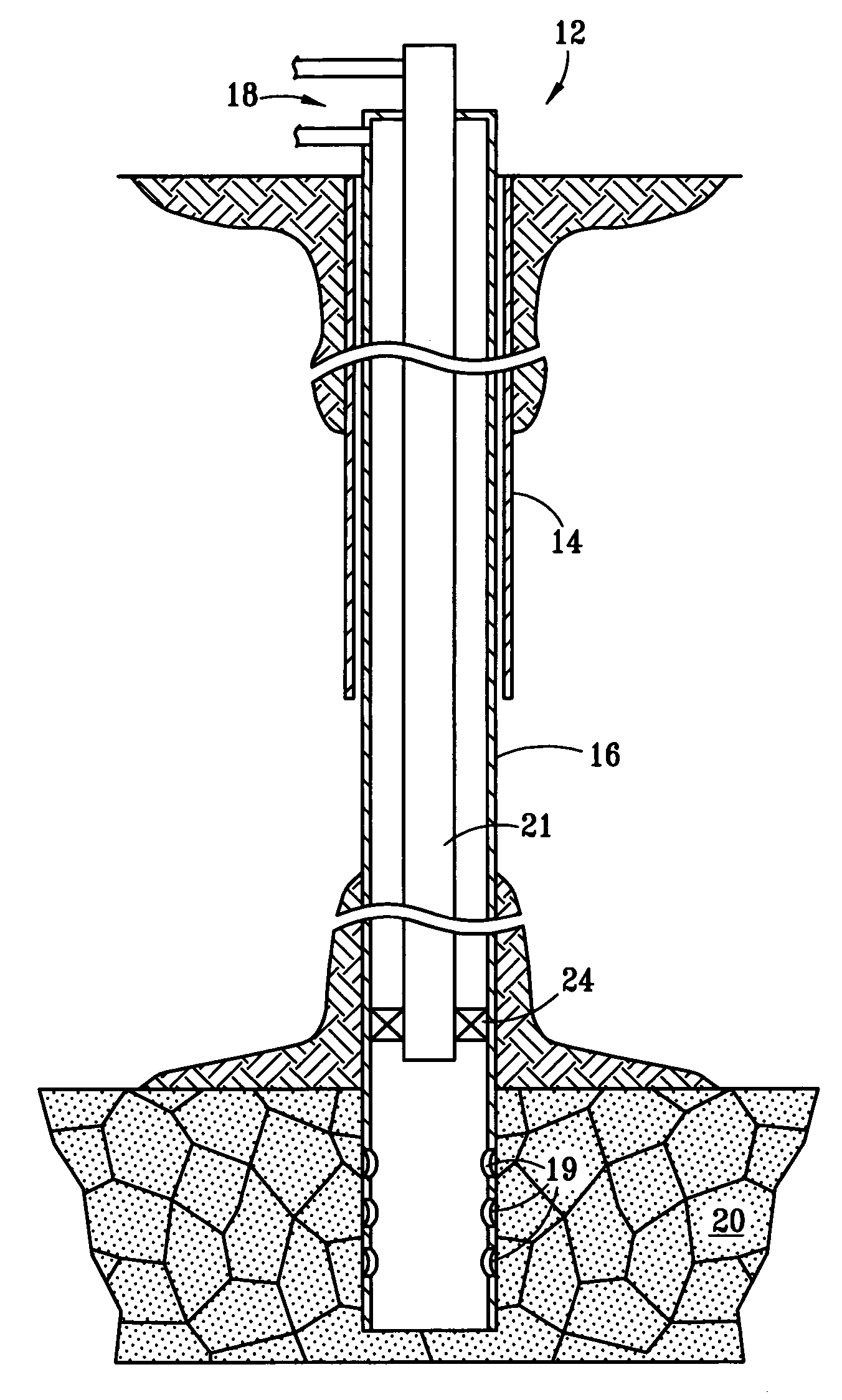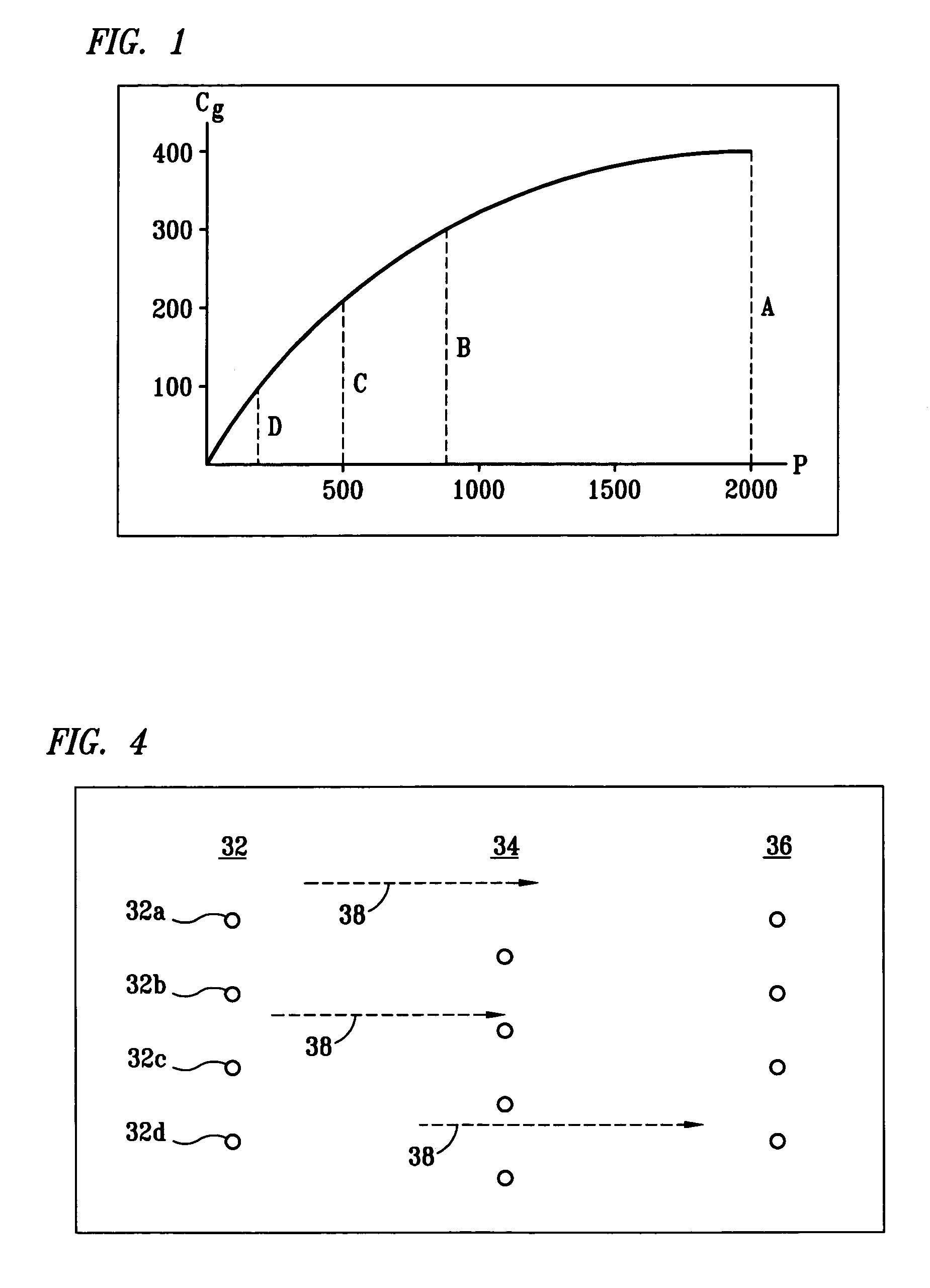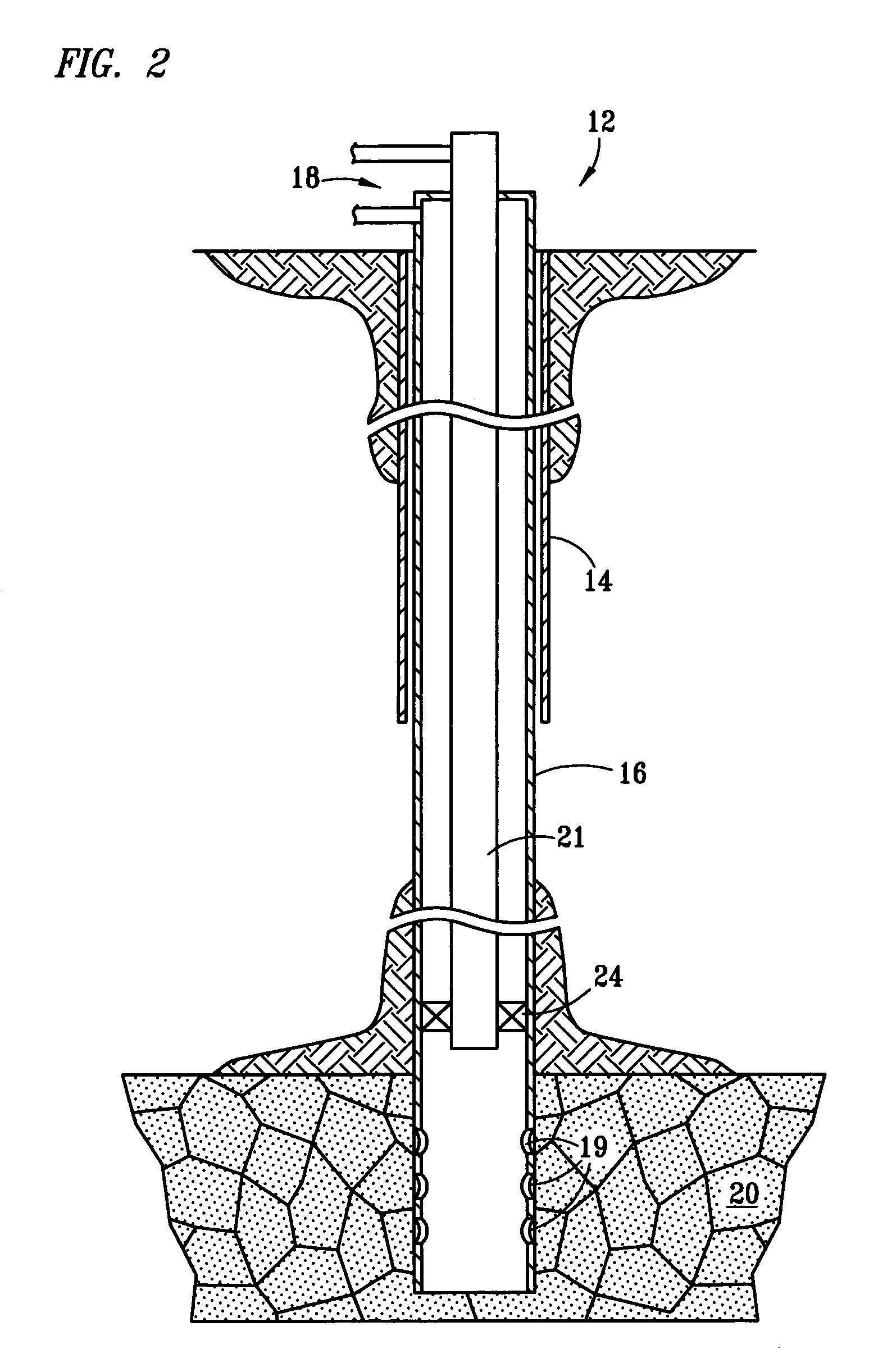Subterranean hydrogen storage process
a technology of hydrogen storage and carbonaceous formation, which is applied in the directions of mining structures, transportation and packaging, and well accessories, etc., can solve the problems of large physical absorption of methane on the coal structure, fractures present in subterranean coal beds, and fractures resulting from fracturing processes
- Summary
- Abstract
- Description
- Claims
- Application Information
AI Technical Summary
Benefits of technology
Problems solved by technology
Method used
Image
Examples
Embodiment Construction
[0014]The present invention involves the injection of hydrogen into a subterranean coal bed which has been subjected to a coal gas recovery procedure in which the coal bed has been depleted of methane. Unless otherwise indicated herein, reference to a methane depleted coal bed is intended to include a coal bed which has been partially depleted of methane, that is, a coal bed which retains a substantial portion of commercially recoverable methane, as well as a coal bed which has been depleted of methane to the point in which no further methane is commercially recoverable. It will be understood that the reference to methane gas herein includes coal bed gas when it is substantially pure methane as well as a coal bed gas which contains predominant amounts of methane, typically 90% or more methane, but which also contains other gases such as carbon dioxide and nitrogen, as discussed previously.
[0015]The invention is carried out in a manner to facilitate the absorption of hydrogen on the ...
PUM
 Login to View More
Login to View More Abstract
Description
Claims
Application Information
 Login to View More
Login to View More - R&D
- Intellectual Property
- Life Sciences
- Materials
- Tech Scout
- Unparalleled Data Quality
- Higher Quality Content
- 60% Fewer Hallucinations
Browse by: Latest US Patents, China's latest patents, Technical Efficacy Thesaurus, Application Domain, Technology Topic, Popular Technical Reports.
© 2025 PatSnap. All rights reserved.Legal|Privacy policy|Modern Slavery Act Transparency Statement|Sitemap|About US| Contact US: help@patsnap.com



